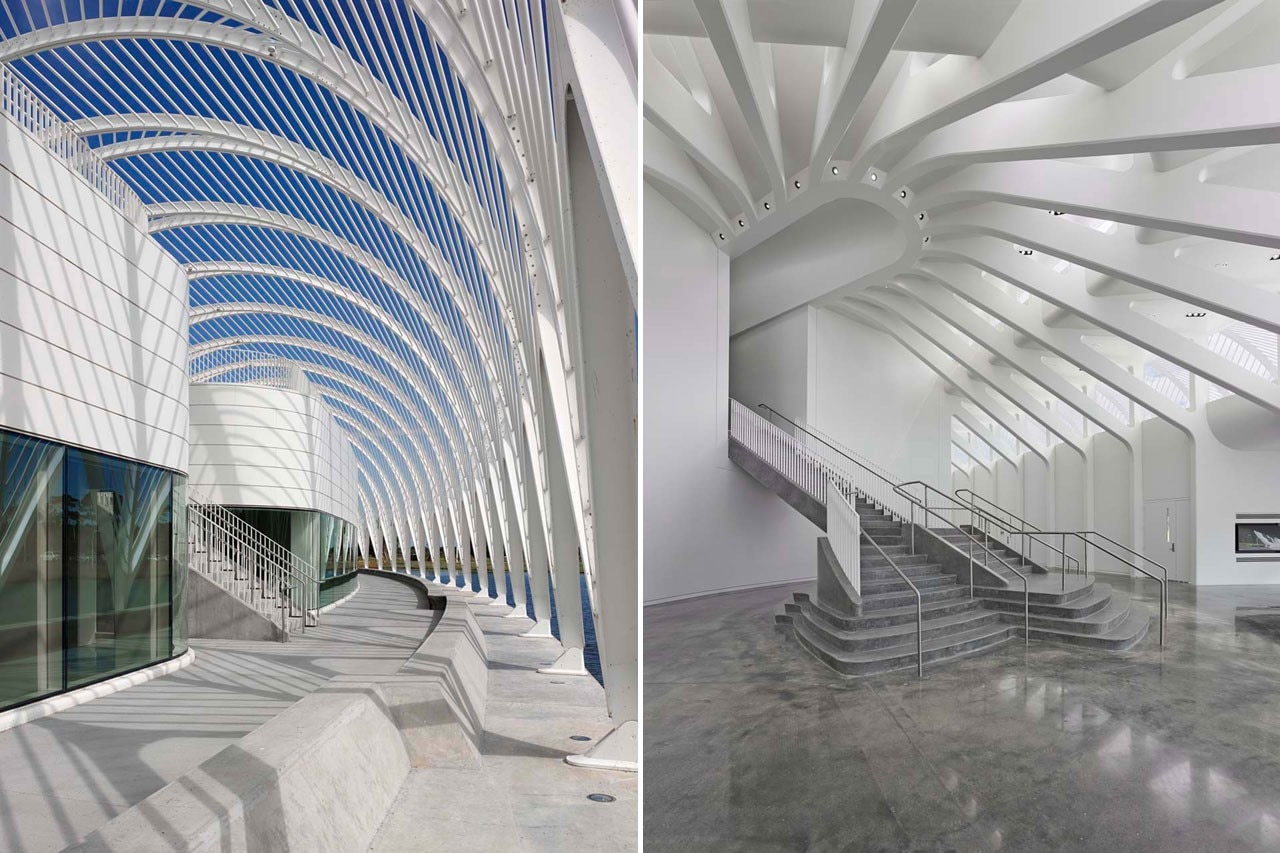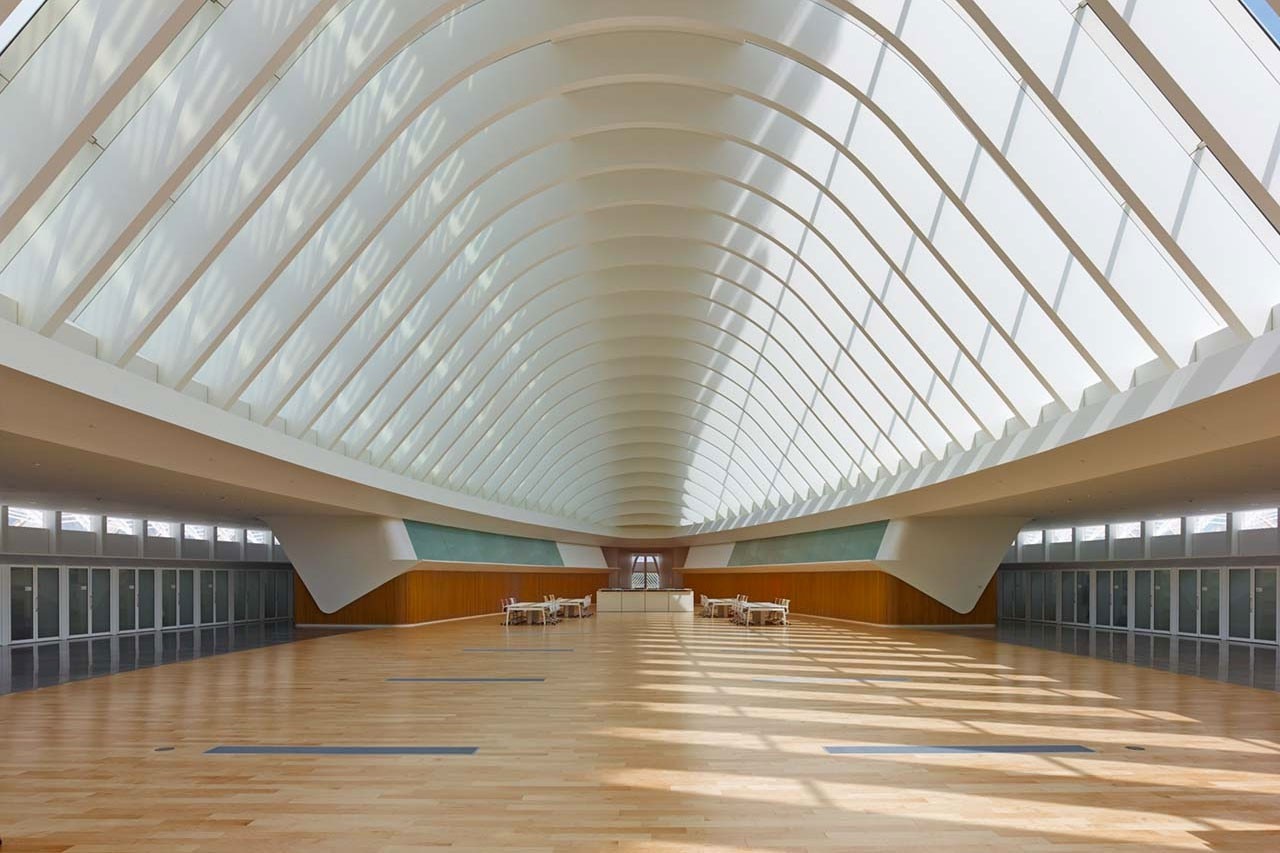
The Innovation, Science and Technology Building, rising above the natural canopy of live oak trees, is located at the northwest head of the central lake. The building is an iconic symbol of the university; visible from Interstate 4 and Polk Parkway, as well as from the campus entry, which is located south of the central lake.
To the greatest possible extent, the campus plan proposes to conserve the existing topography and tree canopies. An elliptical vehicular ring road, lined by tall palms, segregates vehicular traffic from the core of the campus and allows conservation of the existing vegetative buffer between it and Interstate 4 and Polk Parkway.
Parking facilities are located along the ring road, and only emergency vehicles are permitted within the central campus core. Inside the ring road, pedestrian walkways and paths, lined by smaller trees, are oriented parallel to and perpendicular to the central campus axis to form a circulation grid. Administrative, academic, residential, and other support facilities are placed within this grid around the central lake and complete the campus core. All classrooms, offices and dorm rooms are within a 10 minute walk of each other.

The building’s core program of classrooms and laboratories are organized around two curved, double loaded corridors. The peripheral rooms house non-technical teaching labs which have abundant natural light and provide views across the lake. The science and research labs are located within the interior of the building so that the heavy requirements for mechanical systems can be accommodated within the building core. The corridors are two story spaces lit by clerestory glazing. Faculty offices on the second floor overlook the corridor and have views out to the campus through the clerestory windows.
The faculty and administration offices surround the “Commons;” a large multi-use hall illuminated by a central skylight. The “Commons” can be adapted for such diverse uses as lectures, performances, ceremonies, demonstrations, fundraisers, formal dinners and school dances. It can also be configured for exhibitions or recruiting conventions or simply set up as a student study lounge. It is the heart of the Innovation, Science and Technology Building and promotes interdisciplinary interaction between students and faculty; one of the University’s fundamental goals

Being the first building of a new campus, the Innovation, Science and Technology Building must initially function as a “campus within a building.” Its core program of classrooms, laboratories, administrative offices and “commons” spaces has been augmented in anticipation that the building will serve as a miniature campus.
The design incorporates an outdoor garden terrace, shaded by a continuous pergola, which serves as surrogate campus grounds and provides an outdoor learning, gathering and seating area. A shaded arcade, located on the ground level surrounding the building, provides sheltered passage and contemplative seating areas; alluding to great campuses like Stanford and the University of Virginia. Within the building, an amphitheatre that can be divided in two provides space for lectures, ceremonies and can also serve as a forum for informal gatherings and meeting when not in use.
The exterior of the building is dominated by two dramatic elements, the pergola and the operable roof. The pergola is a light steel trellis that surrounds the entire building from the ground to the roof above the corridor. It provides a perceptual ceiling to the exterior arcade and terrace, while reducing the solar load on the building by over 30%.
The operable roof consists of a series of hydraulically activated brise-soleil that provide shading to the commons skylight. The louvers are individually controlled and can be programmed to follow the course of the sun throughout the day. In the next stage of development, the brise-soleil will be outfitted with solar panels.

Campus Master Plan & Science, Innovation and Technology Building, Florida Polytechnic, Lakeland, Florida
Program: masterplan and university building
Architect: Santiago Calatrava
Structural Engineer: Thornton Tomasetti
Civil Engineer: Anderson Lane, Inc.
Architect of Record: Alfonso Architects
GMGC: Skanska
Photographer: Alan Karchmer
Building area: 11,148 sqm

Metamorphosis: when ceramics lives with technology
Iris Ceramica Group presents "Metamorphosis" at Fuorisalone 2025, an experience that merges art and technology, featuring interactive installations and innovative surfaces.








